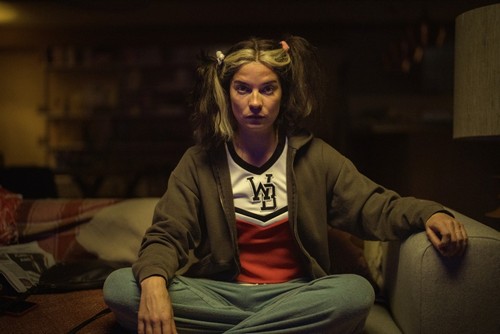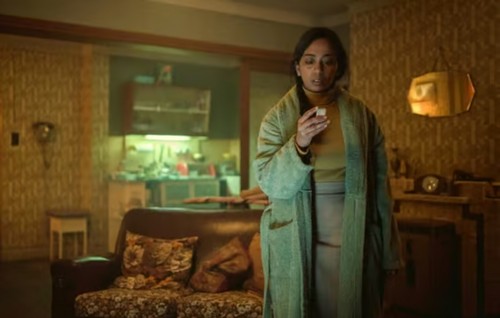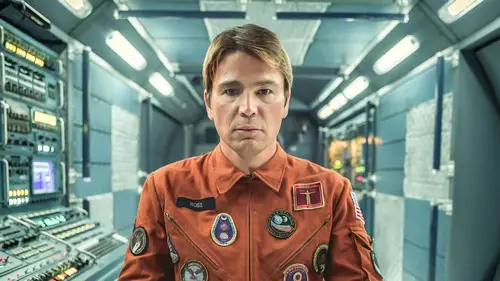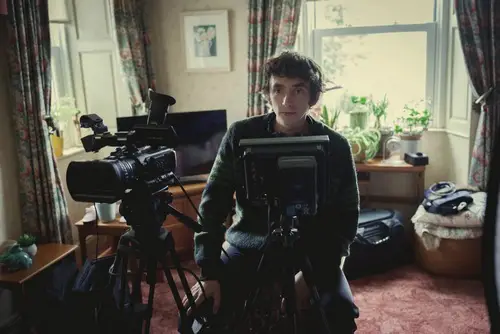Last Updated on June 18, 2023 by Dexter Roona
We have just binged Black Mirror Season 6 so here is Every Black Mirror Episode Ranked for Season 6 from worst to best.
Black Mirror, the renowned anthology series known for its thought-provoking narratives and commentary on humanity’s relationship with technology, has returned with its sixth season on Netflix. This season brings a surprising shift in focus, with fewer sci-fi elements and a greater exploration of past and present settings. While the change may feel odd to some fans, it offers a fresh perspective and prevents the show from becoming formulaic.
In this article, we will rank the five episodes of Black Mirror Season 6 from worst to best, discussing their premises, plots, and overall impact.
NB: This Every Black Mirror Episode Ranked for Season 6: A Season of Mixed Themes and Varying Impact article contains SPOILERS for each episode.
You will also come across affiliate links
Every Black Mirror Episode Ranked for Season 6 – Worst to Best
5 – “Mazey Day”
In the Black Mirror episode “Mazey Day,” the central technology revolves around the use of cameras and the role of the paparazzi. The story is set in the early 2000s, before the prevalence of camera phones and social media, when the paparazzi had a more intrusive and cruel attitude toward people in the public eye.
The episode takes a twist when it is revealed that Mazey (Clara Rigaard), the troubled actress whom Bo (Zazie Beetz), a former paparazzo, is chasing, is actually a werewolf. Mazey had been hiding away from public life due to her involvement in a hit-and-run accident where she hit a pedestrian, who turned out to be a werewolf who bit Mazey during the encounter, causing her to transform into a werewolf as well.
Bo and her friend Hector (Danny Ramirez) manage to infiltrate the rehab clinic where Mazey is staying, and while attempting to free her from chains, Mazey transforms into a werewolf and a killing spree begins. Bo and Hector escape to a diner to warn others about Mazey’s transformation.
Mazey follows them and kills everyone in the diner except for Bo. Bo manages to get hold of a police officer’s gun and shoots Mazey, turning her back into a human. However, Mazey, severely injured, requests that Bo end her suffering. Instead of shooting Mazey, Bo hands her the gun, and Mazey ultimately chooses to take her own life with Bo getting the picture for her big payday.
In the end, Bo and Mazey both meet tragic fates, with Mazey dying by suicide and leaving Bo to grapple with the aftermath of the supernatural and violent events that transpired.

5 – “Mazey Day” 3 – Every Black Mirror Episode Ranked for Season 6
4 – “Joan Is Awful”
In the Black Mirror episode “Joan Is Awful,” Joan wakes up to discover that her entire life is being mirrored on a TV series called “Joan Is Awful” on the streaming service Streamberry, starring Annie Murphy and Salma Hayek Pinault as Joan. Joan is horrified and wants to take legal action against Streamberry, but she learns that the show is actually created using CGI and her likeness rights have been sold to the streaming service. Streamberry constantly monitors her audio through devices like her phone, allowing them to know the finer details of her day.
Streamberry is making “Joan Is Awful” using a quantum computer, which is capable of creating infinite content and tailoring it to each individual in their database. The show focuses on the worst versions of people because audiences are addicted to watching their own flaws and fears on screen. It taps into the human tendency for self-deprecation and drives engagement.
At the end of the episode, realizing she has no legal case, Joan decides to embarrass the real Salma Hayek Pinault by defecating in a church during a wedding. Hayek Pinault, angry with her onscreen representation, joins forces with Joan to put an end to the show. They infiltrate Streamberry’s headquarters and destroy the quamputer responsible for generating the show.
However, there is a plot twist. It is revealed that the Joan and Hayek Pinault characters we’ve been watching throughout the episode are not real. They are different versions of Joan existing in different fictional worlds created by Streamberry. The real Joan exists in the “Ground Zero” world, and the other versions of Joan are coded to behave based on what the real Joan has done in her own universe. The episode presents multiple levels of simulation, with each level featuring a different actor playing the role of Joan, watching another actor play her on screen. The only “real Joan” is the one existing in Ground Zero, who took actions that triggered the events in the other simulated worlds.

4 – “Joan Is Awful” – Every Black Mirror Episode Ranked for Season 6
3 – “Demon 79”
In the Black Mirror episode “Demon 79,” the story follows Needa (Anjana Vasan), a shy sales assistant living in Northern England in the late 1970s. Needa faces racism and harassment both in her personal life and at work. One day, she discovers a talisman with a symbol on it in the basement of her workplace, she accidentally cuts her finger on the talisman and activates its power.
The talisman houses Gaap (Paapa Essiedu), a friendly demon who can only be seen and heard by Needa. Gaap informs her that she must carry out three human sacrifices within the next three days to prevent the world from ending in an apocalypse of burning skies. Initially reluctant, Needa decides to kill people she believes deserve it. Her first victim is a man who molests his own daughter, but her actions attract police attention.
Needa then targets a man who previously strangled his wife, and he allows her to kill him. Finally, she kills a bystander, feeling guilty about this act.
As the episode progresses, one of Needa’s kills doesn’t count because the person who dies had previously killed someone (Demon Contract Small Print). So she sets her sights on Michael Smart (David Shields), a Conservative politician with far-right tendencies, but Gaap discourages her, knowing that Smart’s election will lead to significant suffering. Needa disregards Gaap’s advice and attempts to kill Smart. However, the police intervene and stop her before she can complete the act.
In the end, it is revealed that the talisman was not real but a mere domino piece. Needa is seen in a police station, where she is perceived as mentally disturbed. On May Day, sirens start ringing, and fireballs and explosions can be seen, indicating the beginning of the apocalypse. Gaap appears to Needa in the interrogation room as the destruction unfolds. He is cast into eternal oblivion for failing to help Needa, but he offers her the chance to join him in oblivion, as humans are allowed companions there. Needa agrees, and they walk away from the end of the world hand in hand, with “Bright Eyes” by Art Garfunkel playing.
The interpretation of the apocalypse is open to different possibilities. It could be seen as a literal biblical apocalypse, or it could represent the manifestation of the rising political tensions and far-right ideologies depicted throughout the episode. Needa’s perception of the events could also be influenced by her own fears and paranoia as a marginalized individual in her small town. Regardless, by the end of “Demon 79,” the world has fallen apart, and Needa finds solace in an uncertain but seemingly happier existence with Gaap in oblivion.

3/ Demon 79
2 – “Beyond the Sea”
“Beyond the Sea” features a star-studded cast and a cinematic feel, with its partially space-set storyline. The episode follows two astronauts, Aaron Paul‘s character, Cliff, and Josh Hartnett‘s character, David, who embark on a mission in outer space.
They utilize cutting-edge technology that allows them to inhabit replica body doubles that they transfer their consciousness to while spending time with their families on Earth. However, the episode takes a dark turn when a Manson-like cult character and his followers break into David’s home, killing his wife and children and destroying his replica avatar.
Stranded in space with no one to communicate with except Cliff, David’s mental state deteriorates. In an effort to help him, Cliff allows David to spend time in his body double on Earth, where he develops a close bond with Cliff’s wife, Lana.
Complications arise when David tries to seduce Lana, leading to tension and a troubling revelation. Eventually, David resorts to a shocking act of violence, murdering Cliff’s family. The episode ends with both characters realizing the devastating consequences of their actions.
While not a direct sequel, some similarities to the episode “USS Callister” sparked speculation about a potential connection. However, “Beyond the Sea” stands as a unique and dark exploration of the consequences of technology and human desires and a great episode to sit down and watch.

2/ Beyond the Sea
1 – “Loch Henry”
“Loch Henry” was the standout episode of Black Mirror Season 6 for us here at AFG. The episode delves into the concept of unforgivable villains, a recurring theme in the series. It explores how characters initially sympathized with can turn out to be monstrous. The story revolves around Davis (Samuel Blenkin) and Pia (Myha’la Herrold), student filmmakers who return to Davis’ childhood home in Scotland to create a documentary. But the plan changes when Pia discovers of a much more hard-hitting subject for a documentary about a supposed serial killer named Iain Adair. As they uncover the truth, shocking secrets are revealed, challenging the viewers’ trust and leaving them stunned once again. The episode also highlights how crime can be profitable for a select few.
Pia convinces Davis that the documentary will not only help the local economy but also bring closure to his mother, Janet, and aid in his healing process. Reluctantly, Davis agrees, and they begin investigating the clues. However, they discover a devastating revelation: Davis’ parents, Kenny and Janet, were the actual murderers, with Iain serving as their accomplice. The trio had been involved in making snuff films during their murder spree. Pia, horrified by the truth, attempts to flee but tragically meets her demise.
In an attempt to avoid exposure, Janet hangs herself but leaves evidence for Davis to use in his documentary, which ultimately leads to his success and a BAFTA award.
However, despite his newfound fame and profit, Davis appears isolated and regretful, choosing to distance himself from the celebratory after-parties. It becomes clear that he may not be satisfied with the cost of his success.
The episode raises questions about the ethics of exploitative filmmaking and the public’s fascination with true crime stories. It delves into the tension between genuine intentions to shed light on victims and the profit-driven motives that may overlook the emotional toll on those affected. “Loch Henry” serves as a thought-provoking exploration of the dark side of capitalizing on tragedy and the moral dilemmas faced by artists seeking fame and success at any cost.
The big twist in“Loch Henry” was expertly revealed and we didn’t see it coming and that is why“Loch Henry” is the best episode in season 6 of Black Mirror.

1/ Loch Henry
Every Black Mirror Episode Ranked for Season 6: A Season of Mixed Themes and Varying Impact
Black Mirror Season 6 presents a mixed bag of episodes, each with its own strengths and weaknesses. While the shift in focus may be surprising, it provides a fresh take on the show’s themes. “Loch Henry” takes the top spot for us with its entertaining yet unconventional approach, while “Mazey Day” falls short with a laughable twist.
But that is what we think. Let us know how you rank each episode in the comments below.

More from the AFGeek Blog:
10 Most Expensive TV Shows to Stream Now
Spider-Man: Across the Spider-Verse – An Epic Journey Across Dimensions
Madame Web gets confirmed with Sydney Sweeney in the Lead Role


